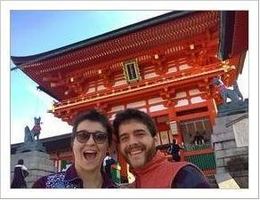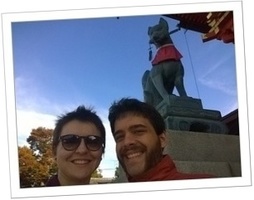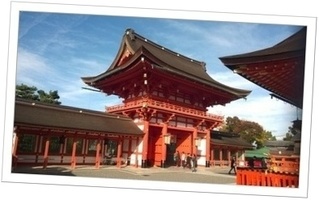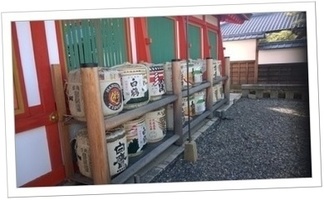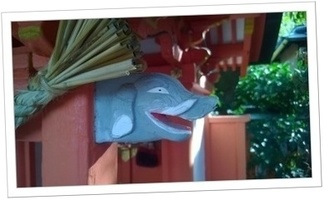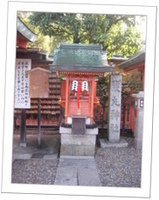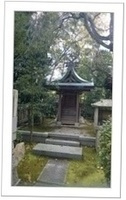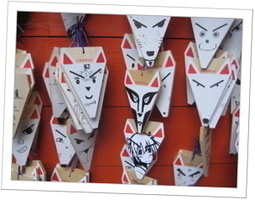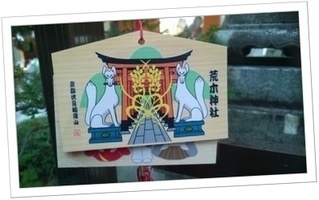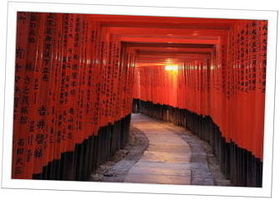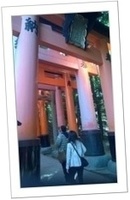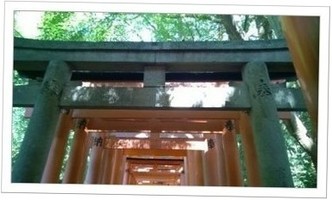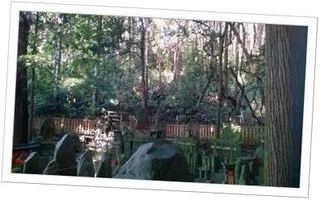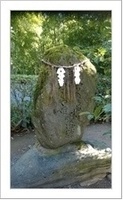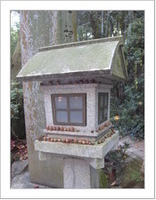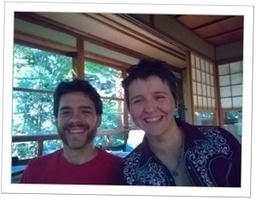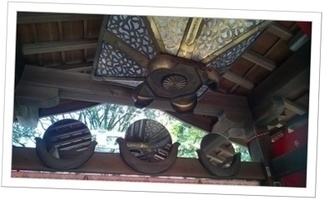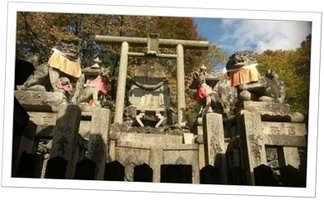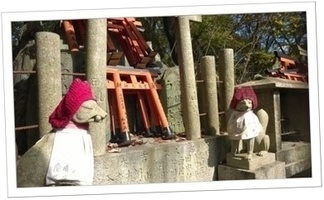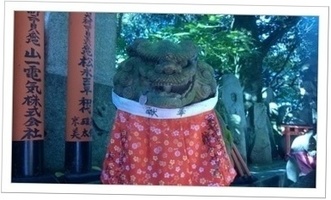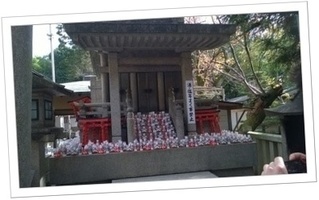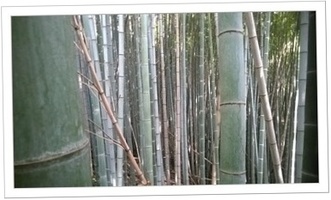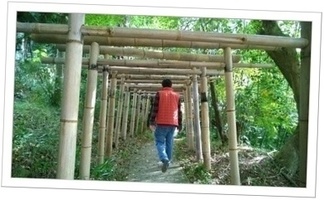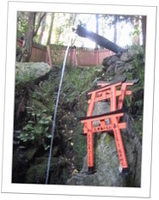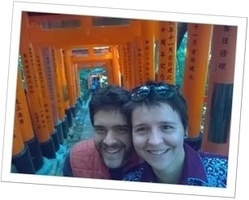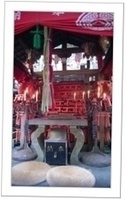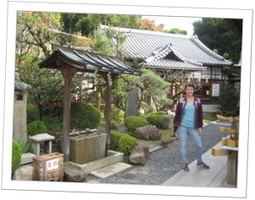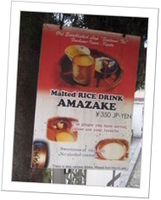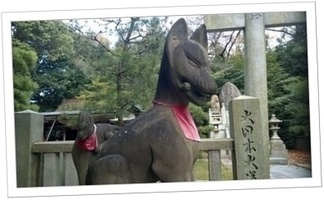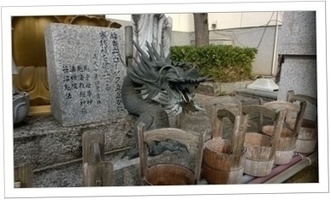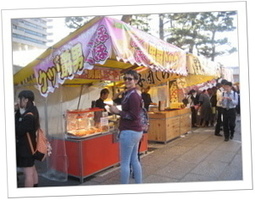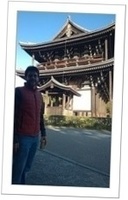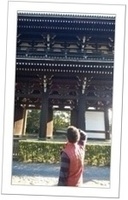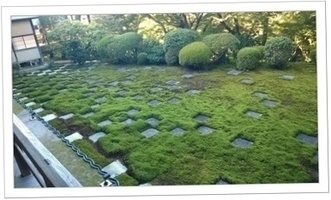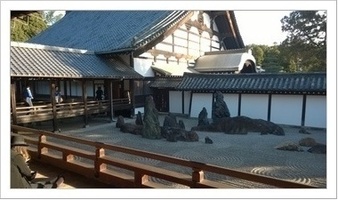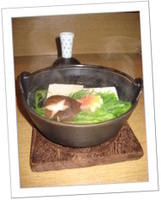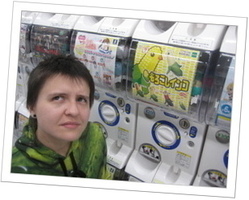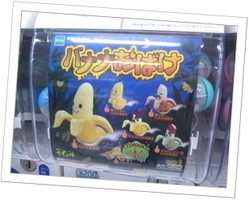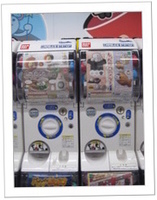Japan Day 3: Thousands of Torii Gates
 February 25, 2016
by
David T. Allen
February 25, 2016
by
David T. Allen
Most of day 3 was in the fox shrine, Fushimi Inari Taisha, where we hiked mountain paths dotted with thousands of vermilion torii gates. Afterwards, we visited the zen gardens at Tofukuji. To rest, we took a dip in a public bath, where I intentionally got zapped with electricity.
Following our bath was a light meal and sake at an Izakaya, or Japanese gastropub. On our way to bed, we stopped in a department store and took pictures of the most ridiculous capsule toys we could find.
Hostel
The previous night, we left Osaka for Kyoto and arrived at our hostel. This hostel was much larger, and everyone placed their wet footwear in lockers when they enter. The concentrated damp shoe scent coalesced with wet tobacco from outside to yield a most pungent memory.
Speaking of hostels, I don’t think I’ve shared any pictures of a Japanese toilet’s “control panel.”
I woke early, went to the nearest convenience store, and surprised Leslie with a breakfast of cream pan, wasabi cheese, and a lemon drink. We took a walk along the Kamo River to watch the sun rise and enjoy our meal.
We encountered a middle-aged woman carrying a portable radio. She seemed well known, and greeted everyone that walked or bicycled by. She cranked on her radio, did some morning exercises, and was on her way.
I couldn’t have asked for a friendlier start to our first morning in Kyoto.
Fushimi Inari Taisha (The Fox Shrine)
This was the third time I’ve been to Fushimi Inari Taisha, but it’s such a unique location that I wanted Leslie to see it. The earliest known structure built there was in 711 AD.
We decided to walk there to get a feel for the area. Groups of unsupervised children headed through the narrow roads to school. We saw the occasional adult, but the morning rush in these suburbs was much less crowded than our experience in Osaka. It probably took us an hour to arrive at the fox shrine, but it was a wonderful morning walk.
Food booths were being set up right outside the entrance, which was exciting. It’s been a long time since I’ve had Japanese festival food.
Just inside, you’ll find sake barrels, wish plaques (Ema), cranes, and all kinds of neat details.
The biggest draw to Fushimi Inari Taisha is the Senbon Torii, or “thousands of torii gates.”
The torii gates are actually donations. A company or individual can pay ¥400,000-¥1,000,000 (approximately $4,000-$10,000) to purchase a small or large torii gate. Their name and date of purchase is engraved on one side, which probably acts as a sort of advertisement.
Here you can see a new torii gate being erected:
There are beautiful cemeteries inside the trails:
People can purchase miniature torii to write their wishes on them and leave them somewhere in the trail. Just like with big torii gates, you can purchase them at various sizes.
I think, if they’re placed in the cemetery, they’re related to a person that’s recently passed away. I remember someone telling me that once, but I haven’t been able to find evidence to support that.
Here’s a smattering of things we saw while hiking:
Somewhere in the middle of the trail, there’s a single restaurant with a beautiful view that serves dishes like Kitsune Udon (Fox Udon), which is a noodle soup with fried tofu, and Inari Zushi (Fox Sushi), which is rice wrapped inside of fried tofu. Many people usually sit outside to rest and drink tea.
For some reason, I’ve really wanted to eat here for years. This was the first time I wasn’t with a group of people, so Leslie indulged me—which was good, since we were hiking up a hill for the past hour and hadn’t had much to eat.
I thought the convenience would make it more expensive. Surprisingly, the prices were reasonable, matching what you’d expect at a standard Japanese restaurant. I enjoyed my soup with a can of Asahi beer while watching a monkey drop from the mountain and try to steal from the plastic food display cabinet. Just up the hill, we got a soybean-flour-and-vanilla-twist soft serve cone.
We found a larger Shinto shrine, so I stopped to show Leslie the Kagami, or mirrors. They’re usually angled so you can’t see yourself. Someone once explained this is a reminder that your prayers shouldn’t be focused on yourself. There are occasions, most notably weddings, where the angle is changed so that newlyweds can see themselves.
Here’s yet another breathtaking view:
You’ll often see red bibs on statues, which may seem peculiar. These are usually placed by parents who are grieving for a child’s death.
According to Japanese mythology, children that die before their parents do are unable to cross into the afterlife since they aren’t old enough to accumulate good deeds, and their passing made their parents suffer. These children pile stones for an eternity as penance.
Jizo protects these children, so normally, these bibs and other children’s clothes are placed on Jizo statues, in hopes that the Jizo will protect their lost child. People also may pile rocks nearby, hoping this will shorten how long their child must pay penance.
Parents may also place bibs and toys as gratitude for a sick child that survives.
It’s an incredibly sad story, but I mention it here just in case you encounter it on your travels. Although the above photos do not feature Jizo statues, I assume the red bibs are for a similar purpose.
Here’s a few more cemetery photos:
This was Leslie’s first time seeing a bamboo forest, and she was adorably gleeful. There’s just something about how the stalks sway, and how a falling branch makes a satisfying sound as it knocks into the hollow bamboo.
While wandering, we stumbled upon a wreath of wishes. I believe these are burned so the words can reach the gods.
I think this photo was taken near the top of the trails. Notice this features the back of the torii gates, due to the writing.
This photo was probably taken at the Yotsutsuji intersection, which is roughly halfway up the mountain, and offers a beautiful view of Kyoto.
I think this shrine picture was taken at the top of the mountain trail, which was surrounded by another cemetery.
After a few hours of walking, we headed back down to the entrance. This is one of my favorite photos, but I can’t name where exactly it was taken.
Yet another photo that I can’t tell you where it was taken. My confusion is from a mix of us being tired after hiking, and us being new to traveling, so I didn’t take very good notes.
At this point, we were calorie deficient, and this sign for amazake really caught our eye. I don’t think I’d ever had it before, and it seemed like one of those things you just have to do.
Amazake is one of the flavors I hope to always remember. Even now, I took a break from writing this article to see how it’s made, or where I can find it.
I leafed through our journal and found what Leslie wrote:
We spent 6 hours in the fox shrine, and Dave’s first recommendation for writing this entry is: “Write down the name of that drink, amazake.”
It is really good. A sweet, malted rice drink with ginger. It was warmed and so tasty. I’m going to learn how to make it.
So, I have proof that Leslie will make amazake someday.
The following are a few more random photos taken in or around Fushimi Inari Taisha.
To finish our hike, we finally got food from the booths outside. Leslie summarized it better than I could:
We walked back to the hostel, ditched our st…
Oh, snap! There was a bunch of festival food outside of the Inari shrine, and we got our eat on: okonomiyaki, custard taiyaki, green dango, and a “potato dog,” which was essentially mashed potatoes coated in funnel cake batter and then fried. We ate it with mayo, ketchup, and butter. So nom.
Hours were spent at Fushimi Inari Taisha, and it remains one of my favorite destinations in Japan.
Tofukuji
On our way back to the hostel, we stopped by a series of nearby sights, one of which was Tofukuji, a temple built in 1236 AD. It also has the famous Sanmon Gate, which is about seventy feet tall and dates back to the 1400s.
We took in the surrounding Zen gardens, which featured rocks, raked gravel, and moss with a checkered pattern.
Bathhouse
According to Leslie’s fitbit, we’d walked 32,000 steps, over 17 miles, but only 100 flights of stairs. (As a point of comparison, a two hour walk in Pittsburgh is nearly 100 flights of stairs.)
Our feet were sore, and we were worn out. I asked the front desk if there was an onsen close by, and they said there was only a public bathhouse. I’d never been to just a bathhouse before, so we took a map and headed out. Given the nature bathhouses, I don’t have any pictures for this section.
The elderly Japanese woman running the entrance must’ve been surprised to see two young white people walk in, but was happy when I asked for instructions in Japanese.
The bathhouse was tiny, and mostly empty. Everyone else was elderly, and, as expected, very Japanese. The men didn’t talk much, but the elderly women tried to talk to Leslie. Realizing they couldn’t communicate, they pulled over a stool for her when she was kneeling in front of the faucet. You see, in an onsen or a public bath, you shower before entering the water. Leslie brought a book with her, which helped the time pass and keep things less awkward.
Meanwhile, on the men’s side …
I encountered an old nemesis: a denki buro.
I had not expected this. When I lived in Sapporo, I had went to at least five different onsens, and I only encountered a denki buro when I went far north to meet my host father’s father. After he retired, he spent most days picking wild mountain vegetables, drinking beer, and dipping in the onsen. To this day, I still want to take a few weeks in northern Hokkaido and have this lifestyle.
Anyway, I noticed a new type of bath, and could read the characters. “Electric bath,” I thought. “Is it just heated with electricity? What could this mean?” So, I hopped in, submerged to my chest, and sat on the bench. My first reaction was, “Something’s not right,” immediately followed by, “What the Ⅎ∆©ҝ?!” I don’t know what I expected, but it wasn’t an electric current running through the water.
It was a shocking experience, to say the least.
I tried to get out, but my legs didn’t work so well, given electric current was running through the water.
I resorted to pulling myself to the stairs with my hands. The further I got away, the more control I had of my legs. I must’ve sat down right in front of where the current was being generated.
I did not leave that onsen relaxed.
History lesson over.
So, in this small Kyoto public bathhouse, I see the kanji for electric bath. Curious about how it compared to my last experience of five years prior, I took turns alternating between the hot bath, the sauna, and the cold bath, soaking it all in before I took a trip to shock city.
It wasn’t as bad of an experience as I had remembered. Getting out of a denki buro feels amazing, like your body is happy it isn’t being electrocuted anymore.
In fact, we returned to this bathhouse a few more times, and I became addicted to the current zapping my exhausted legs. Had it not been for the surprise in northern Hokkaido, I might have had a different first impression.
By the way, there’s a Japanese word for the pins-and-needles sensation of a denki buro: piri-piri.
After forty minutes passed, I hopped out to meet Leslie. There’s no discussion between genders in bathhouses, so we set a time before we started. However, I opening my locker to be difficult, so I asked the elderly woman that worked the front to help me get my clothes. We hung out and talked a while. Some of us … some of us hung out more than others.
Some minor embarrassment aside, we felt rejuvenated. From Leslie’s notes:
31,000+ steps today, and we’re still going to go out drinking.
This is awesome.
If you want to read more about denki buro, try this article from the Japan Times: Shocking baths of Japan. An excerpt:

So far, I’ve been surprised by how no one has yet told me, “nihongo ga jouzu desu ne” (your Japanese is good). It’s always felt weird to hear, especially since my Japanese isn’t very good. Interestingly enough, one of the Japanese women that do podcasts for japanesepod101.com said she hates saying it, but has to because it’s encouraging for new learners. It was the first time I heard a Japanese person also doesn’t like that phrase.
By the way, I highly recommend Japanese Pod 101. These audio files helped me relearn conversation for when my friend from Tokyo visited me, and it also prepared me for this trip to Kyoto.
Post Bath Wandering
Feeling lightly peckish, we went to an Izakaya. We ordered sake, “vegetable croquettes,” and Yudofu. I was excited to try Yudofu, since it’s a Kyoto region delicacy and we make it all the time at home. Leslie confirmed they were all noms.
On our way back, we stopped in a department store and found gashapon (ガシャポン), or capsule toy vending machines, which took up a large portion of an entire floor. There’s so many interesting things to find in gashapon machines; here are a few of our favorites.
We picked up a few as gifts for our friends.
Closing
Wow, this was an incredible first day in Kyoto. We had a mixture of history, nature hikes, culture, meals, and some light shopping in department stores. That’s why I love Japan, specifically Kyoto, so much: it’s easy to see so much history and modern sights in just one day.
Our next entry will highlight our trip to Uji, which is a city famous for green tea, in a country that’s famous for green tea.

